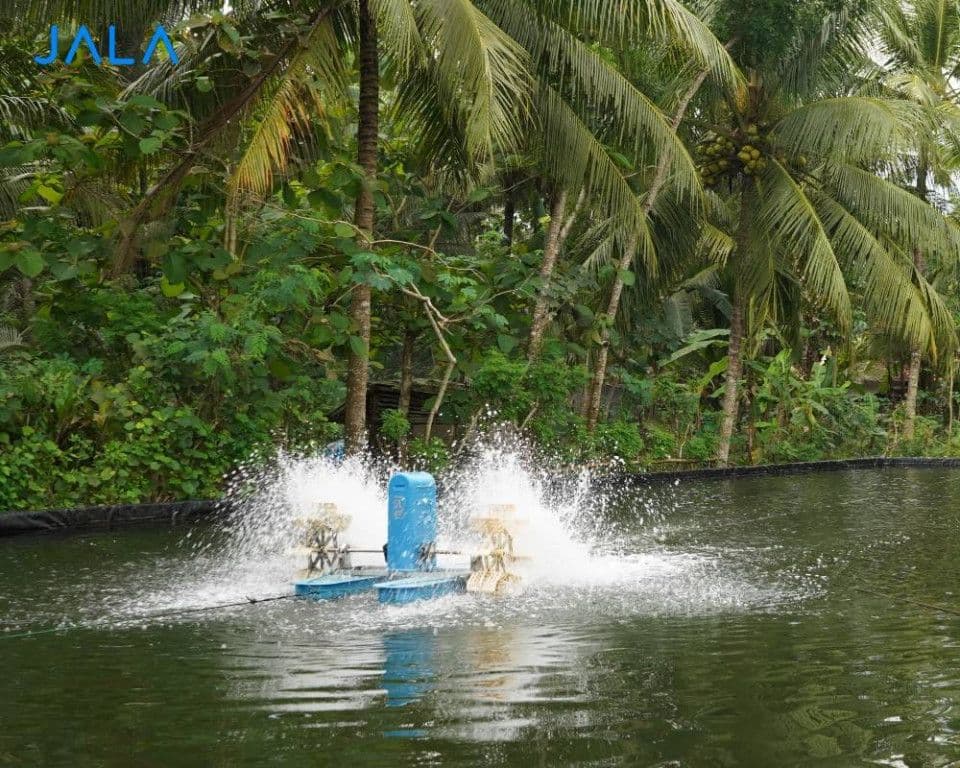
Alkalinity is a water quality parameter measured in ppm (mg/L) which serves as a buffer for waters against increasing acid or base so the pH balance will not be changed. This parameter can neutralize acids without lowering the pH of the solution (Sitanggang & Amanda, 2019).
Alkalinity is also often referred to as a quantity indicating the buffering capacity of bicarbonate ions as well as buffering of carbonate and hydroxide ions in water. The higher the alkalinity, the higher the ability of the water to buffer so that the fluctuations in the pH of the waters are lower.
Alkalinity in shrimp pond
The normal range of alkalinity in water sources for shrimp ponds is 90-150 ppm, while in rearing water the normal concentration is 100-150 ppm. Overly high concentrations of alkalinity can inhibit molting in shrimp, while low concentrations cause the water to be more sensitive to pH changes.
The pH in the waters can change due to biological activities such as the decomposition of organic matter and high density of plankton. This drastic change in pH tends to be bad for shrimp. Shrimp will be susceptible to disease and growth will slow down. Alkalinity within the normal range will prevent pH imbalances hence the shrimp can grow healthily.
Tips for maintaining alkalinity level in shrimp ponds
Alkalinity is an important parameter for the quality of shrimp pond water. Therefore, it is necessary to keep the concentration within the normal range. Here are tips on maintaining alkalinity level in shrimp ponds:
Lime the pond when the alkalinity is too low
To keep the concentration of alkalinity within the normal range, farmers can give lime to the pond regularly by considering the stability of the plankton. An example of lime that can be given is dolomite (CaMg(CO3)2) which contains high levels of calcium and magnesium. Dolomite is able to activate enzymes and meet the needs of calcium and other nutrients needed by shrimp (Ghufran, 2010 in Yunus, et al, 2020).
Measure alkalinity concentrations regularly
Alkalinity measurements must be conducted regularly to identify water quality in the pond. Farmers can use an alkalinity meter to help identify alkalinity concentrations. Once measured, measurement results need to be recorded and monitored to help farmers determine the right treatment for their ponds.
Alkalinity is an important water quality parameter since it affects shrimp growth. By understanding what alkalinity is and its treatment, farmers can run more productive and sustainable cultivation.
References
Menjaga Alkalinitas dan Kesadahan Air Tambak dengan Penambahan Kapur | Minapoli
Sitanggang, L. P., & Amanda, L. (2019). Analisa Kualitas Air Alkalinitas dan Kesadahan (Hardness) pada Pembesaran Udang Putih (Litopenaeus vannamei) di Laboratorium Animal Health Service Binaan Pt. Central Proteina Prima Tbk. Medan. Jurnal Penelitian Terapan Perikanan Dan Kelautan, 1(1). https://stpsibolga.ac.id/ojs/index.php/TAPIAN_NAULI/article/view/19/15
Top 10 Tips for Shrimp Farming - The Basics | Vietfish Magazine
Yunus, R., Haris, A., & Hamsah, H. (2020). Pengaruh Penambahan Kapur Dolomite dan Kapur Tohor dalam Media Pemeliharaan terhadap Moulting, Pertumbuhan dan Sintasan Udang Vaname (Litopenaeus vannamei). Octopus: Jurnal Ilmu Perikanan, 9(1). https://journal.unismuh.ac.id/index.php/octopus/article/view/4000/pdf





